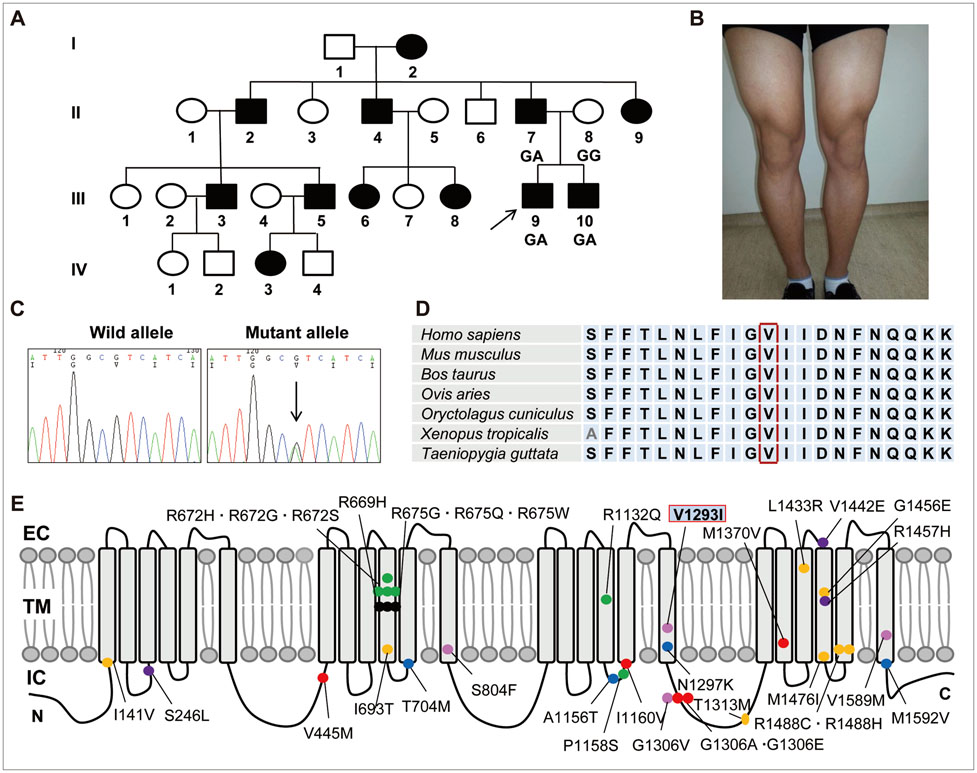J Clin Neurol.
2016 Oct;12(4):509-511. 10.3988/jcn.2016.12.4.509.
A Large Dominant Myotonia Congenita Family with a V1293I Mutation in SCN4A
- Affiliations
-
- 1Department of Biological Sciences, Kongju National University, Gongju, Korea.
- 2Department of Neurology, Samsung Medical Center, Samsung Advanced Institute for Health Science & Tech, Sungkyunkwan University School of Medicine, Seoul, Korea.
- 3Department of Neurology, Chungbuk National University College of Medicine, Cheongju, Korea. sslee@chungbuk.ac.kr
- KMID: 2385120
- DOI: http://doi.org/10.3988/jcn.2016.12.4.509
Abstract
- No abstract available.
MeSH Terms
Figure
Cited by 1 articles
-
A recurrent case of SCN4A related Paramyotonia congenita in two Korean brothers: a case report
Minsung Kang, Sohyeon Kim, Hyungseok Hah, Hung Youl Seok, Jin-Sung Park
Ann Clin Neurophysiol. 2024;26(1):22-25. doi: 10.14253/acn.23008.
Reference
-
1. Ptácek LJ, George AL Jr, Griggs RC, Tawil R, Kallen RG, Barchi RL, et al. Identification of a mutation in the gene causing hyperkalemic periodic paralysis. Cell. 1991; 67:1021–1027.
Article2. Koch MC, Baumbach K, George AL, Ricker K. Paramyotonia congenita without paralysis on exposure to cold: a novel mutation in the SCN4A gene (Val1293Ile). Neuroreport. 1995; 6:2001–2004.
Article3. Arnold WD, Feldman DH, Ramirez S, He L, Kassar D, Quick A, et al. Defective fast inactivation recovery of Nav 1.4 in congenital myasthenic syndrome. Ann Neurol. 2015; 77:840–850.
Article4. Brancati F, Valente EM, Davies NP, Sarkozy A, Sweeney MG, LoMonaco M, et al. Severe infantile hyperkalaemic periodic paralysis and paramyotonia congenita: broadening the clinical spectrum associated with the T704M mutation in SCN4A. J Neurol Neurosurg Psychiatry. 2003; 74:1339–1341.
Article5. Gay S, Dupuis D, Faivre L, Masurel-Paulet A, Labenne M, Colombani M, et al. Severe neonatal non-dystrophic myotonia secondary to a novel mutation of the voltage-gated sodium channel (SCN4A) gene. Am J Med Genet A. 2008; 146A:380–383.
Article6. Fontaine B, Vale-Santos J, Jurkat-Rott K, Reboul J, Plassart E, Rime CS, et al. Mapping of the hypokalaemic periodic paralysis (HypoPP) locus to chromosome 1q31-32 in three European families. Nat Genet. 1994; 6:267–272.
Article
- Full Text Links
- Actions
-
Cited
- CITED
-
- Close
- Share
- Similar articles
-
- A recurrent case of SCN4A related Paramyotonia congenita in two Korean brothers: a case report
- Phenotypic Difference of CLCN1 Gene Variant (A313T) in a Korean Family with Myotonia Congenita
- Myotonia Dystrophica: A Case Report
- Clinical Diversity of SCN4A-Mutation-Associated Skeletal Muscle Sodium Channelopathy
- Electrophysiological characteristics of R47W and A298T mutations in CLC-1 of myotonia congenita patients and evaluation of clinical features


